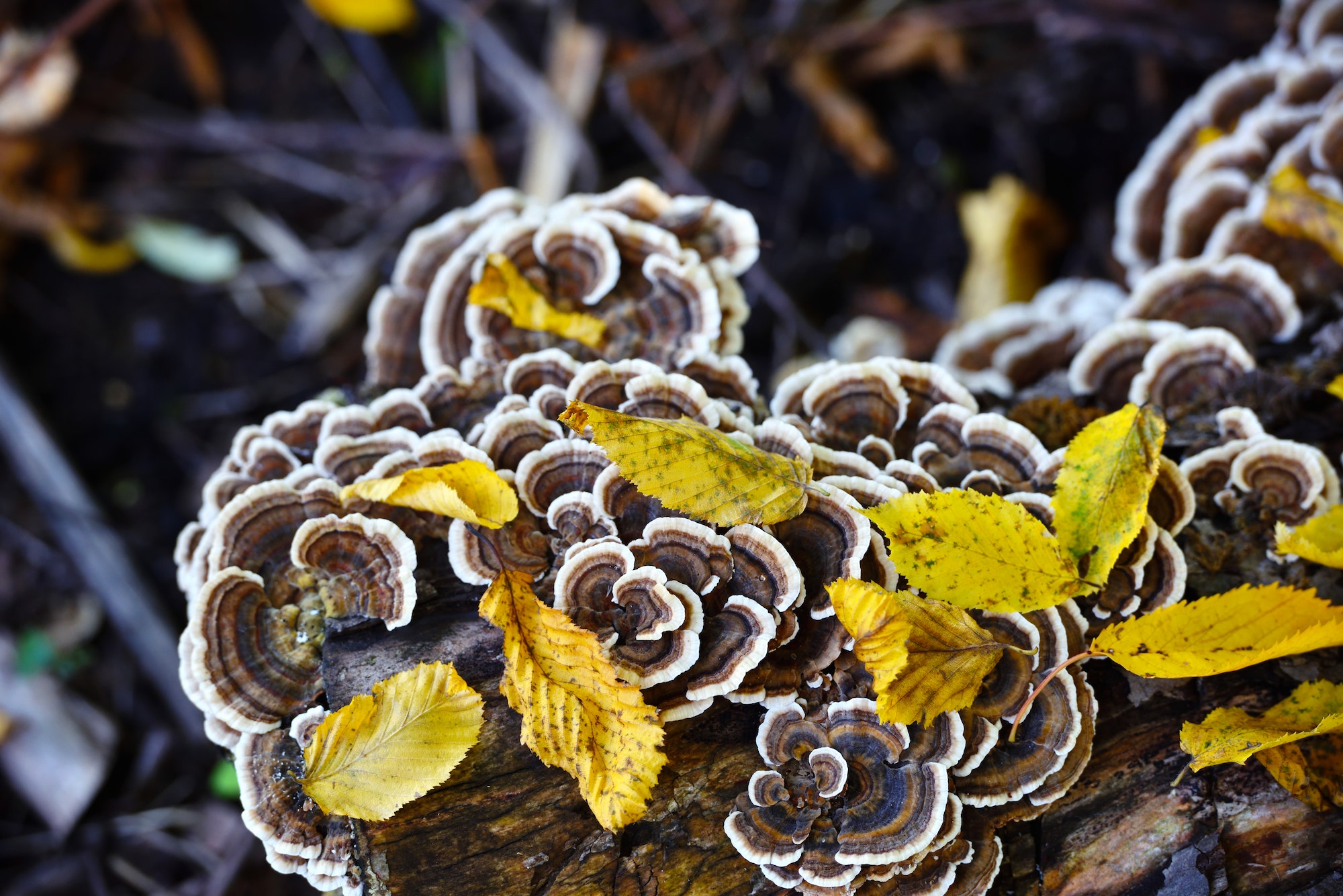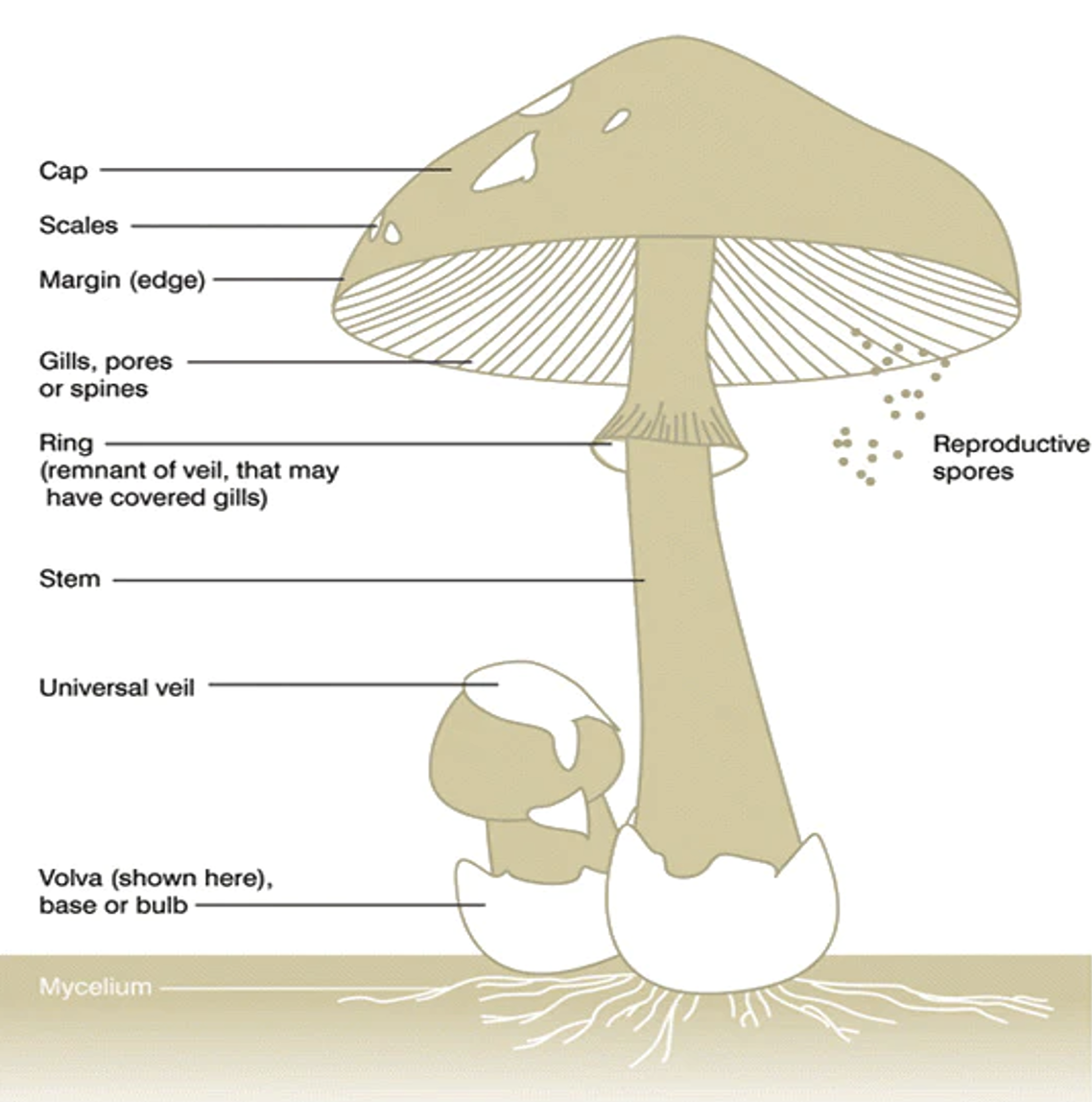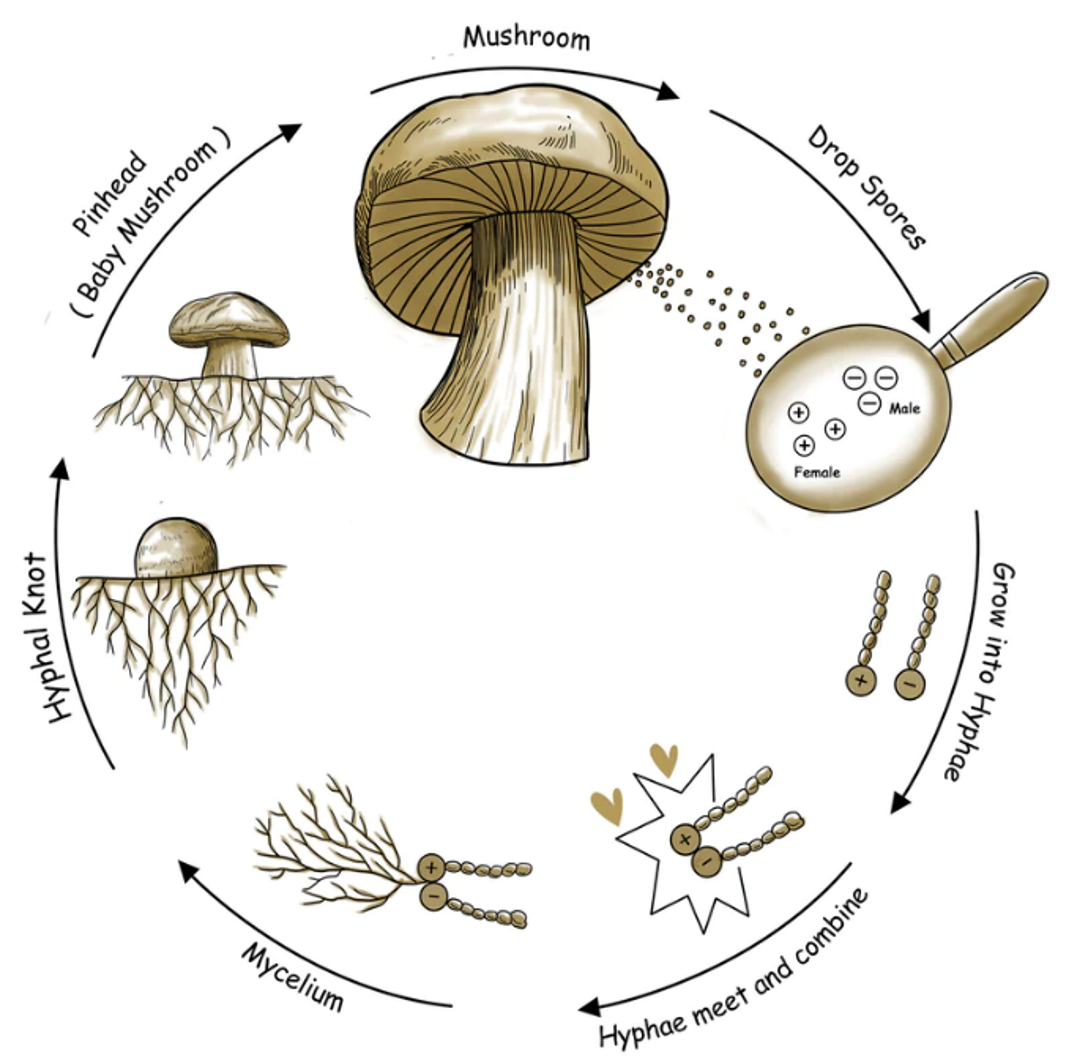Mushroom Basics
Understanding Mushroom Basics: Anatomy and Life Cycle
Disclaimer: The content on this page is intended for informational purposes only. It is not intended to provide medical advice or to take the place of such advice or treatment from a personal physician. All readers/viewers of this content are advised to consult their doctors or qualified health professionals regarding specific health questions.

Mushroom Anatomy
Mushrooms, fascinating organisms that they are, possess a unique structure that sets them apart from other living organisms. By delving into the anatomy of mushrooms, we can unravel the marvels hidden within these enigmatic fungi. Let’s explore the fundamental components that make up a mushroom.
Cap, Gills, Stem, Ring, and Volva:
Cap: The top part of the mushroom, often rounded or flat.
Gills: The thin, vertical structures on the underside of the cap that produce spores.
Stem: The vertical part that supports the cap.
Ring or Annulus: A partial or complete ring of tissue around the stem, leftover from the partial veil.
Volva: A cup-like structure at the base of the mushroom, found in some species.
At the heart of a mushroom lies its cap, the topmost part that catches our attention. Caps come in various shapes, ranging from rounded to flat, and play a crucial role in protecting the gills beneath. These gills, delicate and vertical structures found on the underside of the cap, serve as the spore-producing apparatus of the mushroom. A closer examination of the gills reveals their intricate pattern, which aids in the dispersal of spores.
Supporting the cap is the stem, a vertical component that provides stability and connects the cap to the ground. The stem acts as the backbone of the mushroom, allowing it to stand tall and reach for the sky. As we trace our gaze down the stem, we may encounter a ring or annulus—a circular band of tissue encircling the stem. This ring, sometimes partial and other times complete, is a remnant of the partial veil, a protective covering that shields the gills during the mushroom’s early development.
Additionally, certain mushroom species possess a unique feature known as the volva. Resembling a cup-like structure at the base of the mushroom, the volva adds an intriguing element to the overall appearance. While not present in all mushrooms, the volva serves as a distinctive characteristic of specific species, distinguishing them from their counterparts.

Mushroom Life Cycle:
The life cycle of mushrooms is a captivating process that encompasses various stages, each contributing to the propagation and survival of these extraordinary fungi. Understanding the life cycle unravels the mysteries behind the growth and development of mushrooms.
Spores, Mycelium, and Fruiting Body:
Spores: Mushrooms reproduce through spores, which are released from the gills or pores.
Mycelium: When spores germinate, they form mycelium, a network of fine threads underground or within a substrate.
Fruiting Body: Under favorable conditions, mycelium produces a fruiting body, which is the visible mushroom.
At the heart of mushroom reproduction lies the spores. These tiny, microscopic structures serve as the primary means of propagating mushrooms. Released from the gills or pores of mature mushrooms, spores are carried by wind, animals, or other elements to new locations where they can initiate the growth of new fungi. Remarkably diverse in shape, size, and color, spores hold the potential to create an entire mushroom colony.
When spores find a suitable environment, they germinate and give rise to mycelium. Mycelium represents a network of fine threads that extend underground or permeate through a substrate, such as decaying wood or soil. This vast network acts as the mushroom’s feeding apparatus, absorbing nutrients and facilitating communication between individual mushrooms. Mycelium plays a vital role in the decomposition process, breaking down organic matter and recycling nutrients back into the ecosystem.
Under optimal conditions, the mycelium reaches a critical point in its development and produces a fruiting body. This fruiting body is the visible manifestation of the mushroom, emerging above the ground or substrate. The fruiting body, commonly recognized as the mushroom itself, is the culmination of the mushroom’s life cycle. Its purpose is to produce and disperse spores, continuing the cycle of life.

By understanding the intricate anatomy and life cycle of mushrooms, we gain a deeper appreciation for these remarkable organisms. From the captivating structure of their caps and gills to the complex interplay between spores, mycelium, and the fruiting body, mushrooms showcase nature’s ingenuity and resilience.
